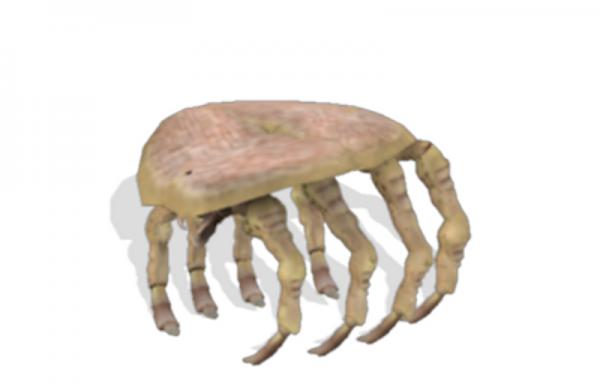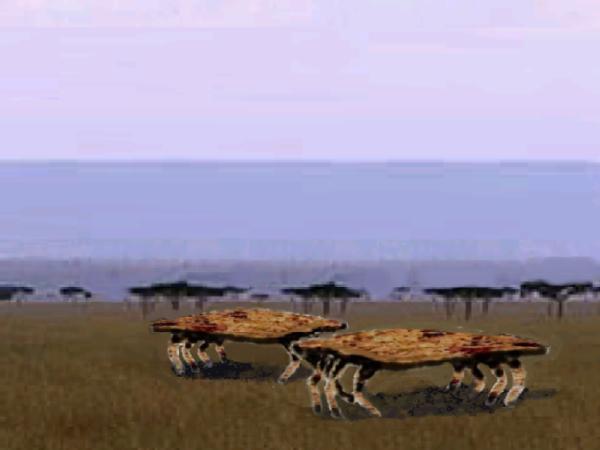BY LETTER
Cookie Fiend
Predatory lifeform native to the planet Elmo |
 Image from Mark Ryherd |
A subsophont predatory lifeform native to the planet Elmo. The Cookie Fiend is roughly square when viewed from above. A typical adult is 40 cm across the 'flats' by 10 cm high with eight 50 cm legs offset along the 'front' and 'back' edges. Its tan skin is semi-smooth, with scattered photo-receptors that look all the world like a chocolate chip in a chocolate chip cookie.
For all its innocuous appearance, this is the dominant predator in desert-to-dry conditions on Elmo, its home planet in Auriga. It is a pack hunter, capable of long distance 45 KPH 'running' with short pogo-ish jumping sprints approaching 100 KPH for less than a minute. It uses a tactic similar to wolf pack hunting, tiring the prey via the chase. Rather than finishing with a scrum, however, the cookie fiend charges in, pogoing in at speed to land on the prey, bringing their digestive system into contact and releasing a moderate potency bioactive acid, beginning the digestion of the prey.
As multiple members of the pack disgorge their acid loads, the prey tends to fail rapidly, turning into something along the lines of a goo-pile, which the cookie fiends then absorb for nourishment.
Their environmental pressure developed several defensive strategies against such actions, but in areas where there are no such defenses the cookie fiends are pestiferous in the extreme. They are capable of obtaining sustenance from many biochemical patterns, including Terran animal stock, long enough to cause significant havoc.
Eventually biochemical incompatibility will cause severe problems even for the adaptable cookie cutter metabolism, but generally by that time the damage is done. Colonists on Elmo (a middletech world aligned with, but not a member, of the Orion Federation) have suffered considerable losses among domesticated species of various kinds.
Cookie fiends are difficult to rear when transplanted to other worlds,since they require a very specific balance of certain trace elements (including arsenic). They often have a high birth rate when introduced to other environments, but do not gain full size and suffer from hyper-aggressive tendencies when among other species. It is not uncommon for translocated populations to die out because of nutritional deficiencies or lack of resources due to over-predation.
 Image from Steve Bowers |
Related Articles
Appears in Topics
Development Notes
Text by John B
Initially published on 27 September 2005.
Initially published on 27 September 2005.






